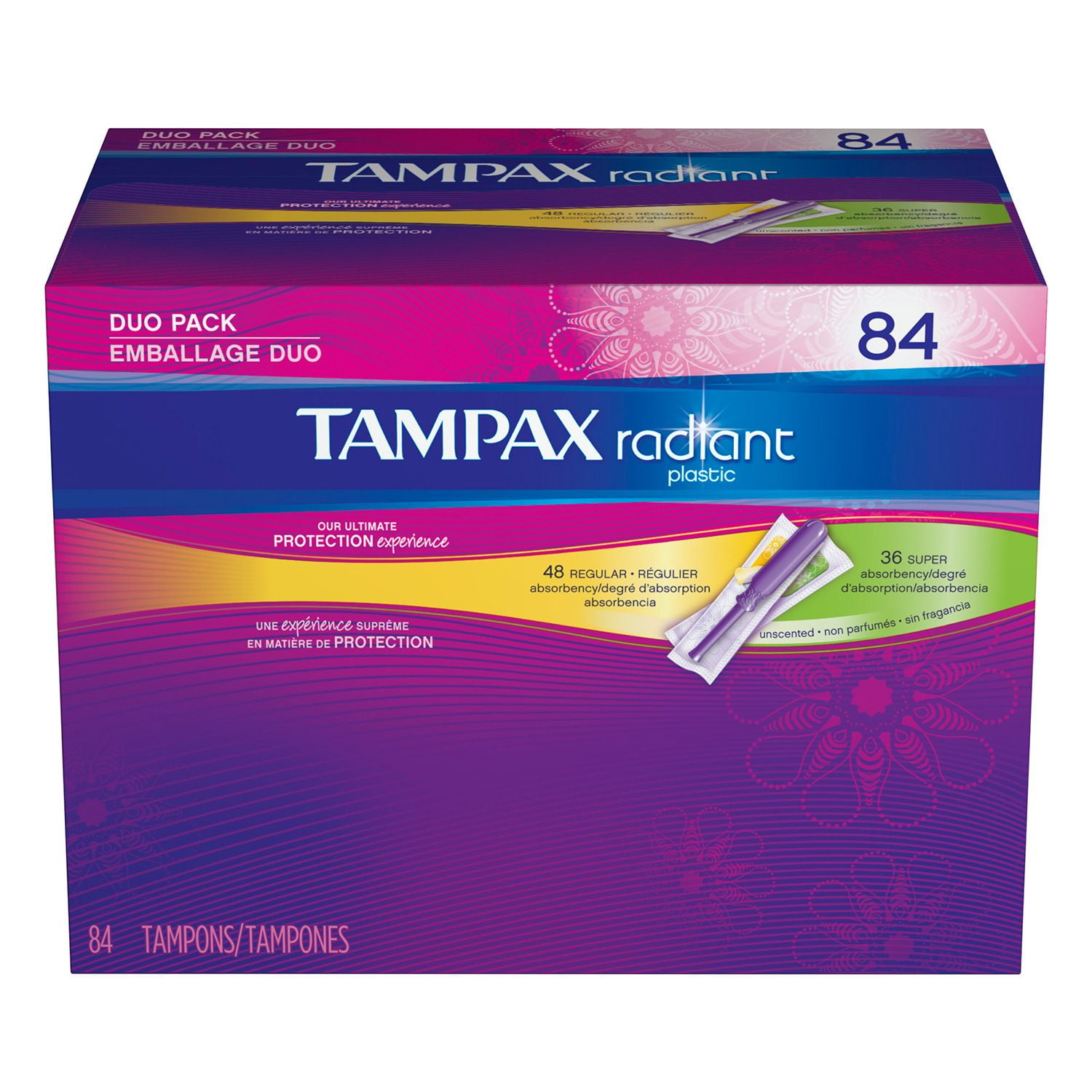

- #TAMPAX SUPER PLUS RADIANT HOW TO#
- #TAMPAX SUPER PLUS RADIANT PROFESSIONAL#
- #TAMPAX SUPER PLUS RADIANT FREE#
Discover outstanding protection for up to eight hours with Tampax, the #1 U.S. Don’t settle for less when you can get more. Properly dispose of your tampon in the trash.
#TAMPAX SUPER PLUS RADIANT HOW TO#
How to remove a tampon: You'll use your thumb and finger to grip the string and pull it slowly out. After you’ve pushed the plunger in all the way, pull the applicator out. How to insert a tampon: Slowly insert the tampon applicator from the tip, all the way to the grip. Plus, they come in a CleanSeal Wrapper created for more** ease, more clean, and more hygiene – to help dispose of them wherever you are. Thanks to their Textured Grip, they are specifically designed for incredibly comfortable tampon insertion.
#TAMPAX SUPER PLUS RADIANT FREE#
Free of dyes, perfume, latex*, BPA, and elemental chlorine bleaching. Uncomfortable to remove? Go down an absorbency. Get up to 100% leak and odor-free protection with Tampax Radiant tampons designed with a LeakGuard Braid to help stop leaks before they even happen. and Bruce A.It’s a new time for that time of the month. Villaume, Richard Danila, and Ruth Lynfield, Staphylococcal Toxic Shock Syndrome 2000–2006: Epidemiology, Clinical Features, and Molecular Characteristics, PLoS ONE, August 10, 2011 Perkins, Toxic Shock Syndrome in the United States: Surveillance Update, 1979–1996, Emerging Infectious Diseases, December 11, 1999Īaron S. Reingold, Alexis Weil, Kathleen Shutt, Anne Schuchat, and Bradley A. DeVito and Arnold Schecter, Exposure assessment to dioxins from the use of tampons and diapers, Environmental Health Perspectives, January 1, 2002ĭioxins and their effects on human health, World Health Organization, October 4, 2016 Menstrual Tampons and Pads: Information for Premarket Notification Submissions - Guidance for Industry and FDA Staff, U.S. Sharra Vostral, author of Under Wraps: A History of Menstrual Hygiene Technology, interview Terry Balluck, spokesperson for Kimberly-Clark, interviewĭeborah Kotz, spokesperson for FDA Media Relations, interview Tierno Jr., professor and researcher at the NYU School of Medicine, interview Other companies chose not to respond at all.Īnne Hochwalt, researcher at Procter & Gamble, interview

(The ingredients listed there are the same as those noted on Tampax boxes.) Solimo, an Amazon brand, forwarded us a screenshot of the side of its tampon box. Tampax pointed us to the trade-association-run repository Smart Label from the US-based Consumer Brands Association and Food & Consumer Products of Canada. When we asked the companies that made the tampons we tested to provide complete lists of what went into their products, many reiterated what’s stated on their tampons’ boxes. Applicators generally are listed as being made of a plant-based plastic, plastic, or cardboard, with any dyes listed as “pigments” of undisclosed sources. Tampax Pearl Best applicator tampon The Pearl tampon’s foolproof, non-compact plastic applicator, long braided string, and sturdy, reusable wrapper pleased our testers. But these ingredients lists aren’t exhaustive, and they don’t detail how much of any material a tampon is made of (nor whether a tampon might contain any trace elements as a result of manufacturing processes).
#TAMPAX SUPER PLUS RADIANT PROFESSIONAL#
Still, there’s no significant evidence to suggest that tampons you can buy in the US contain anything harmful (except in rare cases of allergies) or that organic tampons, which are made with organic rather than conventional cotton, are better for your health.Ī note of disclosure: The author of this guide has a past professional relationship with a tampon company.Įvery tampon we tested came with a list of materials noting what the absorbent core was made of (usually rayon or cotton) and what the string consisted of (generally polyester, polypropylene, cotton, or a combination of these materials), as well as, if applicable, the materials in any “fabric overlay”-or “veil”-around the absorbent core, which is meant to prevent fiber shedding (this veil is usually made of polyethylene, polypropylene, or a combination of the two). That’s because tampon makers aren’t required to disclose this information. We aren’t sure of everything that’s in most tampons, including some that we recommend. Organic tampons are our favorite applicator-free options. Among applicator tampons, we like Tampax Pearl and Tampax Pure (an organic choice) best. After ripping apart, as well as menstruating on, hundreds of tampons, we can tell you, first, that many of these cotton wads are identical or nearly so, and second, that small details-such as the shape of an applicator or the composition of the wrapper-make some tampons much more pleasant to use than others.


 0 kommentar(er)
0 kommentar(er)
